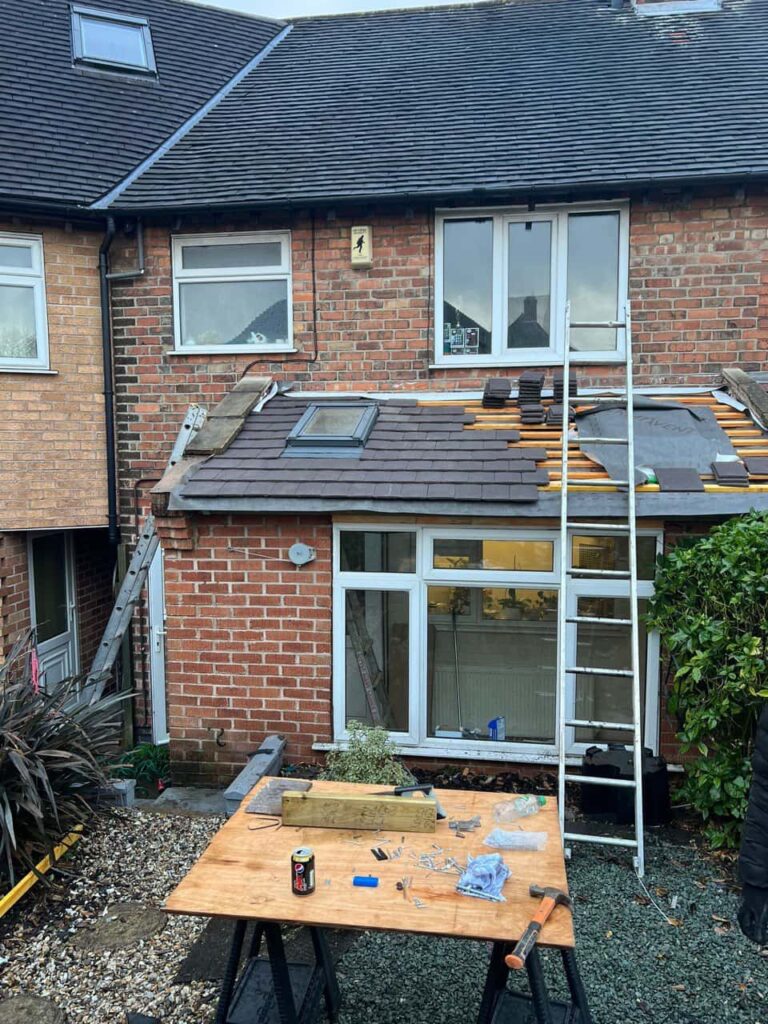Introduction
When it comes to roofing, energy efficiency isn’t always the first factor homeowners consider. However, the right roof design can make a noticeable difference to how comfortable and cost-effective your home is to run. One of the most efficient and practical roof designs available in the UK is the hip roof.
At LJ Roofing Cirencester, we specialise in helping property owners across Gloucestershire make informed decisions about their roofs. In this article, we explore nine key features that make hip roofs stand out for their energy-saving potential—and why they might be the ideal choice for your home or development project.
What Is a Hip Roof?
A hip roof has four sloping sides that meet at a central ridge, forming a pyramid or trapezoid shape depending on the property layout. Unlike gable roofs, which have only two sloping sides, hip roofs offer a more enclosed and uniform structure. This design isn’t just aesthetically pleasing—it plays a major role in enhancing thermal performance and reducing energy costs.
1. Reduced Surface Area Exposed to Wind
Hip roofs have a sloped design on all sides, which means they handle wind loads better than flat or gable roofs. This not only improves durability but also helps keep warm air inside during winter and reduces heat gain during summer.
- Less turbulence around the roof structure
- Reduced drafts and air leakage
- Increased indoor comfort in varying weather
2. Better Ventilation Options
The shape of a hip roof makes it ideal for well-planned ventilation systems. With vents placed strategically at the eaves and ridge, air flows naturally through the attic space, helping regulate temperature and moisture levels.
- Minimises condensation and mould
- Reduces strain on heating and cooling systems
- Promotes longer roof life by preventing overheating
3. Optimised Insulation Space
Hip roofs provide consistent loft or attic space beneath the roof slopes, making it easier to install uniform layers of insulation. This consistent coverage improves the thermal envelope of the home.
- Even insulation distribution
- Fewer thermal bridges or cold spots
- Enhanced year-round energy efficiency
4. Natural Solar Deflection
Thanks to their multi-angled design, hip roofs deflect sunlight more evenly throughout the day. Unlike flat or mono-pitched roofs, no single surface bears the full brunt of direct sun for extended periods.
- Reduced heat absorption in summer
- Cooler roof surfaces lower attic temperatures
- Supports stable indoor climate control
5. Ideal for Solar Panel Installation
Despite their angled surfaces, hip roofs can still accommodate solar panels effectively. With modern racking systems and proper orientation, the slopes can be used to harness maximum solar energy without compromising the roof’s structure.
- Multiple angles for optimal sun exposure
- Discreet placement for visual appeal
- Long-term energy savings when combined with renewables
6. Compact and Weather-Resistant Design
The inward slope of a hip roof makes it more resistant to heavy rain, snow, and wind—all of which contribute to heat loss or structural wear over time. By efficiently shedding water and snow, the roof remains well-protected and thermally stable.
- Prevents pooling and water ingress
- Reduces maintenance-related heat inefficiency
- Supports consistent thermal performance
7. Durable Roofing Materials Enhance Efficiency
Hip roofs are often finished with tiles or slates that have natural thermal mass—helping regulate internal temperatures. At LJ Roofing Cirencester, we recommend high-performance materials that retain heat during winter and deflect excess warmth in the summer.
- Materials suited to the Gloucestershire climate
- Long-lasting protection with energy-saving properties
- Compatibility with eco-friendly membranes and underlays
8. Minimal Eaves Overhang Improves Sealing
The structure of a hip roof typically allows for more controlled eaves overhangs, reducing air leakage while still allowing for proper ventilation. Well-sealed eaves help minimise energy loss around the edges of the roof.
- Less draught infiltration
- Better insulation continuity at roof-wall junctions
- Reduced cold bridging
9. Compatible with Modern Eco-Roof Technologies
Whether you’re adding green roofing systems, reflective coatings, or breathable membranes, hip roofs provide an excellent base for integrating these technologies. Their geometry works well with upgrades that enhance energy performance.
- Ready for low-energy retrofits
- Flexible design supports future efficiency improvements
- Works with both traditional and modern architecture
Conclusion
Hip roofs aren’t just a stylish architectural choice—they’re a smart investment in energy efficiency, comfort, and long-term value. From natural insulation support and better airflow to solar compatibility and superior weather resistance, they bring a host of practical benefits to both new builds and existing properties.
At LJ Roofing Cirencester, we offer expert advice, installation, and maintenance for hip roofs across Gloucestershire. Whether you’re planning a new roof or upgrading your current structure, our experienced team can help you make the most of this efficient and dependable roofing style. Get in touch today to learn how a hip roof could transform your property’s performance and appeal.
Call us on: 01285 704 395
Click here to find out more about LJ Roofing Cirencester
Click here to complete our contact form and see how we can help with your roofing needs.

